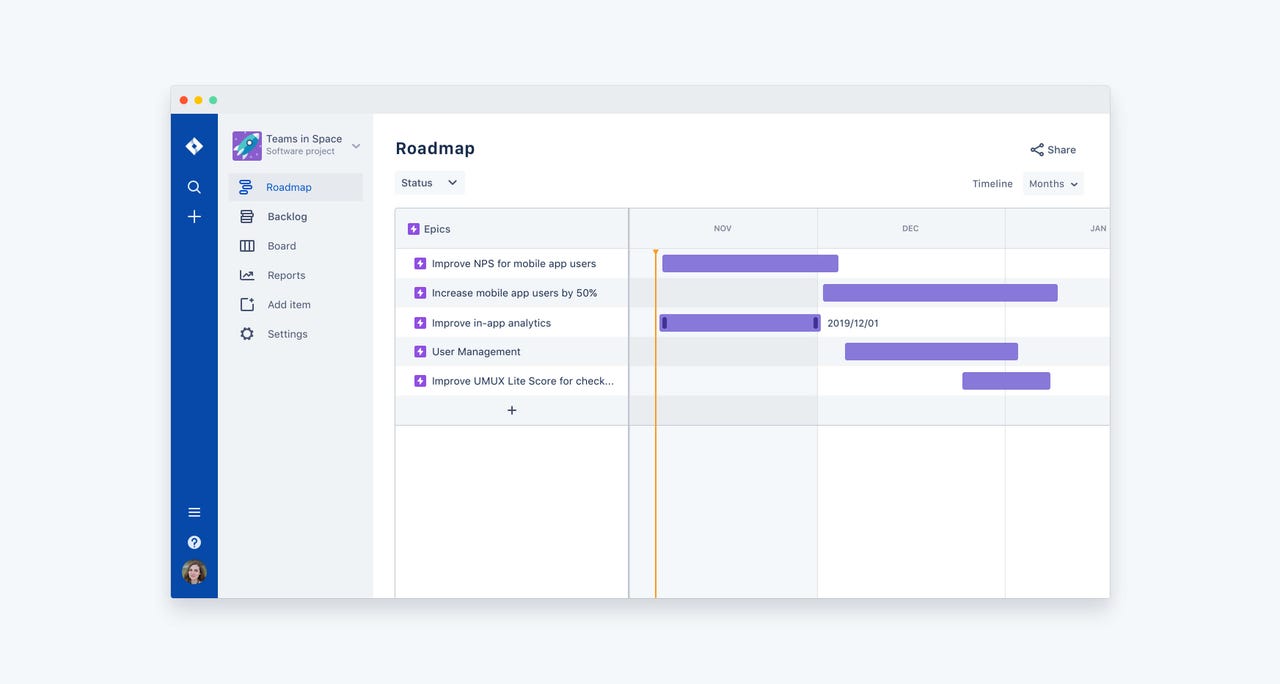Atlassian unveils completely rebuilt version of Jira


Atlassian on Thursday is announcing a completely revamped version of its signature product, the project tracking software Jira.
Jira launched as a humble bug tracker in 2002 but now, together with Atlassian's second-biggest product Confluence, accounts for two-thirds of Atlassian's revenue. It has more than 50,000 customers, including hyper-growth startups and most of the Fortune 500.
While it's a successful product, there's no doubt that software development has changed significantly since Jira's launch, Megan Cook, head of product for Jira Software Cloud, told ZDNet. Teams are smaller and nimbler -- they are delivering software several times a day instead of just once or twice a year. There's a new emphasis on aligning goals throughout the business and software development teams. The new Jira was built with these changes in mind.
"We realized we needed to make this much simpler and much more powerful -- we needed to disrupt ourselves before someone disrupts this for us," Cook said.
The new Jira includes a feature called roadmaps, which helps developer teams view their work in a timeline and assess the big picture. The feature is intended to eliminate the need to create status update decks in programs like Powerpoint or Excel. Users can easily easily update their timelines with changes if, for instance, a project is pushed back.
"Jira already knows that information, it just needed to present it in a simple way," Jake Brereton, head of marketing for Jira Software Cloud, told ZDNet.
With roadmaps, teams can keep track of their own work, keep project managers up to speed and share their timelines with other divisions of the business, like marketing teams or executives.
Atlassian is also adding features that give developers more control over their workflows. So, for instance, they're breaking teams away from templates and schemas. Developers can turn features on and off as needed instead of relying on a Jira administrator to do it. "We think administrator role is just as important as ever," Brereton said. "We're trying to free them up to do the things they can do well."
Additionally, users are getting more control of their workflows via the revamped Jira boards. Users can now more easily move cards and create columns, triggering updates to the workflow engine for a project. Previously, making these kinds of changes required complex configuration.
Atlassian is also rolling out several new integrations with tools like Bitbucket Pipelines and Jenkins for CI/CD status; InVision, Adobe and Sketch for UX and design; and Slack, Gmail and Workplace by Facebook for collaboration.
To make Jira Cloud more suitable for larger enterprises, Altassian is also increasing the user limit to 5,000 seats.
This article was amended to note that Jira and Confluence make up two-thirds of Atlassian's revenue.